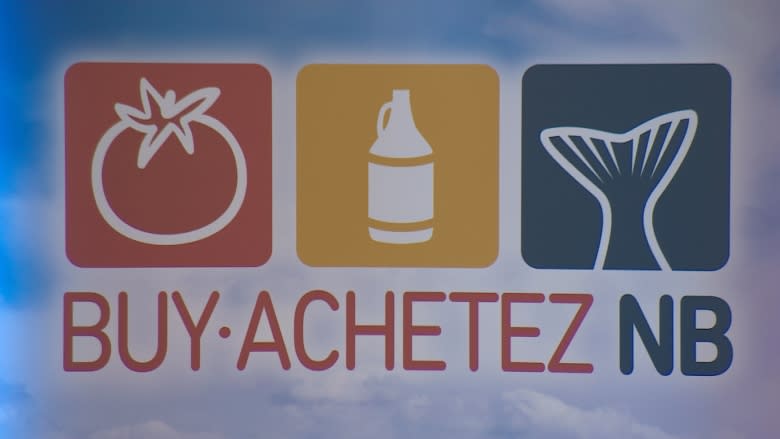Province puts money into promoting local food
New Brunswick farmers welcomed the provincial government's announcement Tuesday that it will spend $415,000 to promote the sale of local food and beverages.
But Rébeka Frazer-Chiasson, a farmer in Rogersville, said there still needs to be more clarity about how exactly the province wants to help farmers.
"We are happy to see government step in and take a role in that promotion, but I'm not sure there is a willingness to understand what role they should be playing," said Frazer-Chiasson, who also sits on the board of the National Farmers Union in New Brunswick.
A buy local strategy
The announcement was made at the Boyce Farmers Market in Fredericton on Tuesday in front of a stand that sells mostly international cheeses.
Rick Doucet, the minister of agriculture, aquaculture and fisheries, said the money will support the implementation of the province's Local Food and Beverages Strategy throughout 2017 and 2018.
The strategy, which was announced in October 2016, is aimed at increasing consumer awareness about local food and helping farmers bring their produce to the market, both locally and internationally.
The province also hopes to encourage more people to work in the sector, either by starting a businesses, such as a farm, or by expanding existing ones.
"Some of the most delicious, nutritious foods in the world are being grown and produced right here in New Brunswick," Doucet said. "We need to really let New Brunswickers know about it."
Doucet did not speak to how the money will be used specifically and said more announcements will follow.
He stressed a need for more consumer education about buying local and said the government wants to make local goods more recognizable through labelling and marketing.
But the shift to buying local has to come from consumers, Doucet said, since the government cannot force a retailer to sell locally produced food.
"And when they start to drive this, what is going to happen is retail is going to follow soon," he said, adding that New Brunswickers spend about $2.6 billion on food each year.
"Much of it is produced elsewhere in the world so just imagine, just imagine the possibilities if we could produce even half of that food right here in New Brunswick."
Doubling of efforts
Frazer-Chiasson said consumer education is a big piece in making people buy local, as is promoting New Brunswick-made food and beverages and creating pride in the products.
But some of the work, including labelling, has already been done by other groups and organizations in the province.
Rather than potentially doubling efforts, she suggested the government consult these groups about what role it could take in promoting New Brunswick products and helping farmers and where it may be better equipped to help.
"I think we need to have a conversation about who should be doing what at this point," she said, adding that more information on the use of the $415,000 would help.
"We'd really just like to know what it is and how is the government stepping in and working with what's already been done and pushing it one step over."
One potential initiative, which Doucet supported during his announcement Tuesday, would be to bring more local produce to school and hospital cafeterias.
Frazer-Chiasson said the government itself should serve more local food at its luncheons and meetings.
"That's where we should be promoting and eating and celebrating what we can grow in New Brunswick," she said.
Transportation costs
Andrew Lovell, an apple farmer and director with the Agricultural Alliance of New Brunswick, who was present during Tuesday's budget announcement, said local producers will benefit from the provincial initiative.
He said the biggest barriers for farmers to get their food sold right now remain transportation costs and access to larger markets.
Selling their products closer to home would cut down on those costs and reinvest in the farming sector in New Brunswick.
Right now, starting a new farm or business is too costly for a lot of people, he said. One acre on an apple farm, for example, now costs $25,000 to plant.
"That's a lot of money to come up for someone who is not currently in the business," Lovell said.




